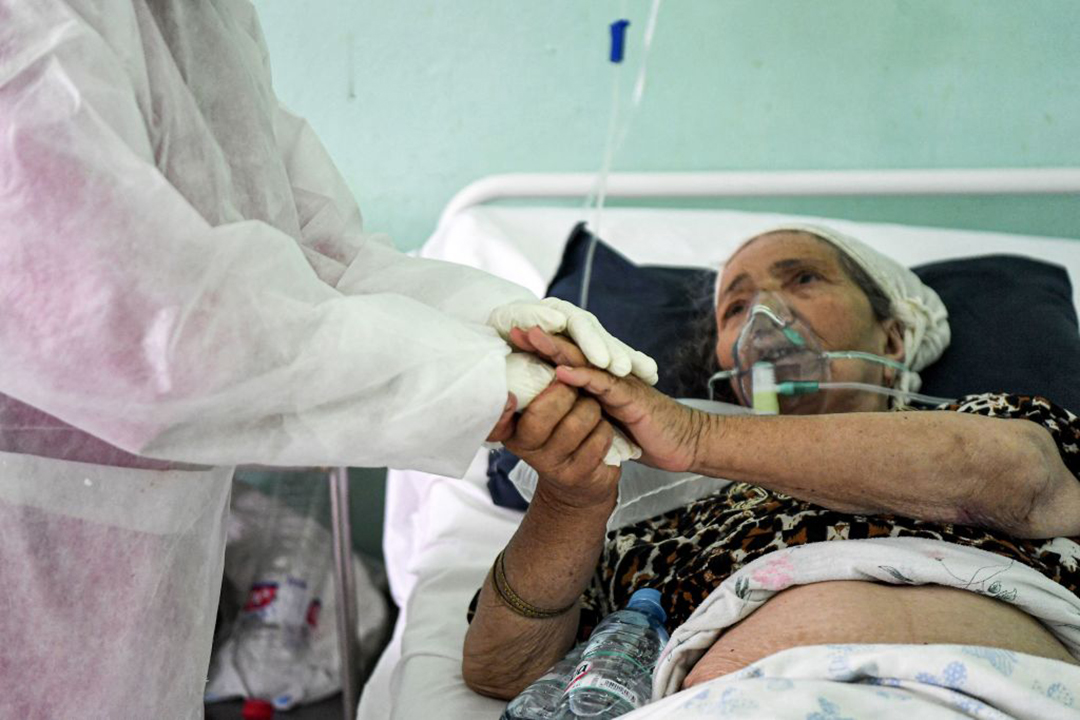COVID-19 Cases in the Maghreb Dropping
ADF STAFF
In video widely circulated in mid-July, a hospital director in Mateur, Tunisia, was seen breaking down in tears as a national shortage of medical oxygen threatened the lives of COVID-19 patients.
“People are dying in front of me, and I cannot do anything. Why?” he cried. “I have 40 beds and only 40 oxygen tanks. How can I save people? For god’s sake, why?”
Similar scenes played out across North Africa, as the more-infectious delta variant combined with relaxed restrictions to provoke a major surge in July and August.
But now, just weeks later, the number of new infections is in sharp decline.
It’s a welcome turn for four countries in the Maghreb region—Algeria, Libya, Morocco and Tunisia — which have been among the hardest-hit nations in Africa.
Tunisia
As of September 26, Tunisia had recorded 704,914 cases of COVID-19 and 24,732 deaths in a country of nearly 11.7 million.
That gave the country a per capita death rate of 2,115 per million, hundreds more per million than the continent’s next-highest death rate in South Africa (1,487).
With a seven-day average of 7,901 cases on July 13, Tunisia’s peak came earlier than the rest of the region.
Hospitals and morgues overflowed, as the country had 175,429 cases and 5,108 deaths in July. Bodies were left in rooms with other COVID-19 patients for up to 24 hours because of a lack of staff to organize transfers.
“We are in a catastrophic situation,” Health Ministry spokesperson Nisaf Ben Alaya told reporters on July 8. “The health system collapsed. Doctors are suffering from unprecedented fatigue. … The boat is sinking.”
After anti-government protests, Prime Minister Hichem Mechichi fired Health Minister Faouzi Mehdi on July 21. Four days later, President Kais Saied dismissed Mechichi, dissolved parliament and assigned the country’s pandemic response to the Army.
Authorities enforced strict travel restrictions and an early evening curfew.
Then case numbers began to drop. On September 24, the seven-day average was 662, the lowest it had been since late March.
Algeria
According to the Pasteur Institute, a state-run research center, the delta variant caused 71% of Algeria’s new COVID-19 infections in July. Of the country’s 202,772 cases since the pandemic began, 67,000 occurred from June to August.
The country peaked with almost 2,000 new cases on July 28. But while there were 268 deaths in the first week of August, there were only 132 the week of September 12.
Some observers like Professor Reda Djidjik, head of immunology at the Beni-Messous University Hospital, suspected case numbers were much higher because of a dearth of testing.
“We probably have around 25,000 to 30,000 cases per day,” he told The Africa Report magazine in early August. “This explains why hospitals are saturated, because 1-3% of patients require hospitalization and oxygen assistance.”
Authorities tightened restrictions August 1, reimposing a nightly curfew and banning gatherings, including protests.
Morocco
After easing curfew and opening its borders in June, the virus peaked with nearly 10,000 new cases on August 10. Of Morocco’s 929,305 cases, more than 237,000 occurred in August compared to fewer than 8,000 in May.
Authorities imposed a new curfew, restricted gatherings, and restricted travel to and from Agadir, Casablanca and Marrakesh.
Health Ministry official Abdelkrim Meziane Bellefquih said September 28 that infections were down for a seventh straight week.
Libya
Citing the surge in COVID-19 cases in neighboring Tunisia, Libya closed its border July 8 and suspended flights between the two countries.
But the virus continued to spread.
After recording nearly 8,000 cases in June, the conflict-plagued nation had almost 60,000 in July, including a record 6,061 new infections on July 18, according to Libya’s National Centre for Disease Control.
“The constantly rising curve of new cases shows that we are bracing for a third wave, especially now that the delta variant is spreading in neighboring countries,” the center’s senior physician Tareq Gibrael told Arab Weekly newspaper July 12. “We are in a very tough position.”
Libya imposed a curfew and a three-day lockdown in early August in anticipation of the Muslim New Year. In September, cases and deaths finally began to decline, as Libya recorded 83 deaths the week of September 12 and saw its caseload drop dramatically to a seven-day average of 838 cases on September 27.


Comments are closed.